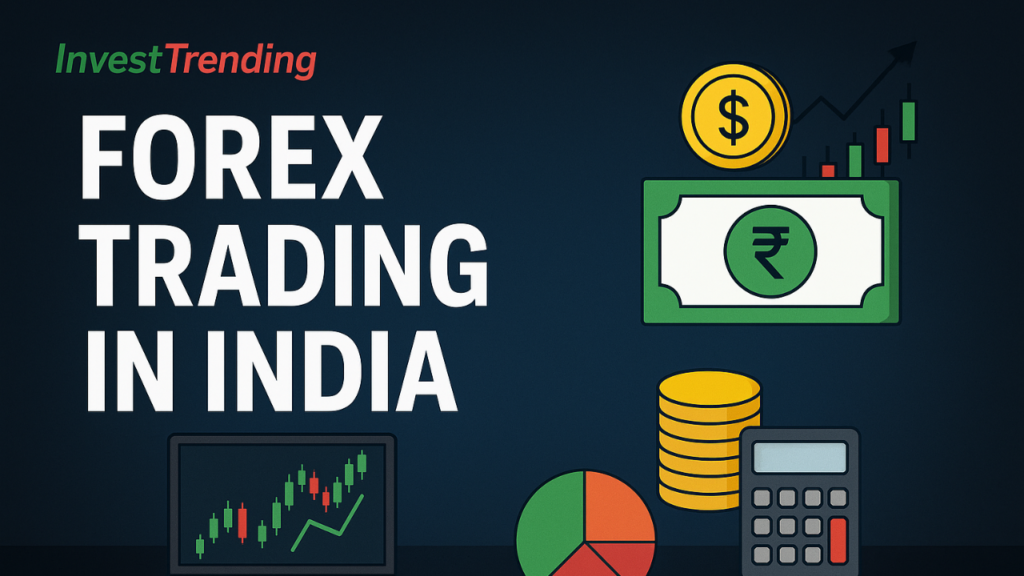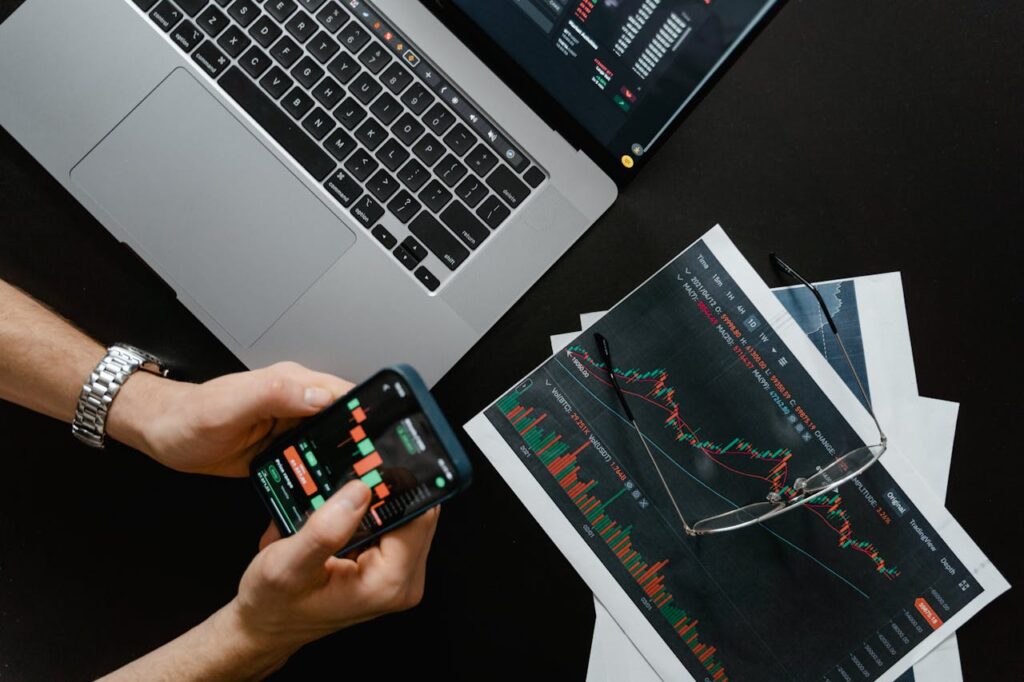Are you curious about how people make money by trading currencies? Forex trading—also known as foreign exchange trading—is becoming increasingly popular in India. But before jumping in, it’s important to understand how it works, what’s legal, and how to stay safe. In this beginner-friendly guide, you’ll learn everything from the basics of currency pairs to the step-by-step process of trading legally in India. Whether you’re just getting started or looking to sharpen your skills, this 2025 edition covers all you need to know.

What is Forex Trading?
Forex trading involves exchanging one currency for another with the aim of making a profit from the fluctuations in their exchange rates. For example, you may buy USD/INR if you believe the USD will strengthen against the INR.
The forex market is the largest and most liquid financial market in the world, with a daily trading volume exceeding $6.6 trillion (as of 2023).
Is Forex Trading Legal in India?
Yes, forex trading is legal in India, but it is heavily regulated. According to the Reserve Bank of India (RBI) and the Securities and Exchange Board of India (SEBI), Indian residents are only allowed to trade currency pairs that involve the Indian Rupee (INR).
Permitted currency pairs include:
- USD/INR (US Dollar / Indian Rupee)
- EUR/INR (Euro / Indian Rupee)
- GBP/INR (British Pound / Indian Rupee)
- JPY/INR (Japanese Yen / Indian Rupee)
Why only these pairs?
The reason behind this restriction is to control capital outflow and protect retail investors from excessive volatility and fraud. These pairs are allowed because they are traded on Indian exchanges like NSE, BSE, and MCX-SX, where they are regulated by SEBI. This ensures transparency, investor protection, and compliance with RBI’s foreign exchange management policies.
Trading other currency pairs like EUR/USD or GBP/JPY is not allowed unless you are doing so through an overseas broker under the Liberalised Remittance Scheme (LRS), which has its own restrictions.
How Forex Market Works
The forex market operates 24 hours a day, five days a week. It is decentralized and comprises various participants like banks, governments, corporations, and individual traders.
The market is divided into three major sessions:
- Asian Session (Tokyo)
- European Session (London)
- North American Session (New York)
These sessions overlap at times, creating periods of high volatility and trading opportunities.
How to Start Forex Trading in India
To start forex trading legally in India, follow these steps:
- Choose a SEBI-regulated broker that offers access to INR-based currency pairs.
- Open a trading and demat account with the broker.
- Complete KYC verification using PAN, Aadhaar, and bank documents.
- Fund your trading account via NEFT/RTGS/UPI.
- Use the trading platform (like MetaTrader 4 or 5) provided by your broker.
- Start trading in INR-based currency pairs.
Step-by-Step Guide to Trade on a Legal Platform in India (Example: Zerodha)
Zerodha is one of the leading SEBI-regulated brokers in India for forex trading.
How to Trade on Zerodha (Step-by-Step)
- Visit Zerodha’s Website: Go to zerodha.com and click on ‘Sign up’.
- Open a Trading & Demat Account: Fill in the required information and upload PAN, Aadhaar, and bank details.
- Complete eKYC: Perform online KYC verification with Aadhaar OTP.
- Activate Currency Derivatives Segment: Enable this during the account setup or from the console later.
- Fund Your Account: Transfer funds through UPI or net banking.
- Login to Kite Platform: Use Zerodha’s Kite platform to analyze and place trades.
- Start Trading INR-Based Pairs: Choose from USD/INR, EUR/INR, etc., and place buy/sell orders.
Note: Kite by Zerodha is a user-friendly platform where traders can monitor currency trends, place orders, use indicators, and analyze charts easily.
Key Regulations and Guidelines
- SEBI and RBI regulate forex trading in India.
- Leverage is capped at 1:50 for retail traders.
- No cross-currency trading is allowed without RBI approval.
- Traders must adhere to the Liberalised Remittance Scheme (LRS) for any offshore trading activity.
- Using unauthorized foreign brokers can lead to penalties.
Risks Involved in Forex Trading
Forex trading is highly risky due to:
- Leverage risk – Amplifies both profits and losses.
- Volatility – Sudden market changes can result in heavy losses.
- Regulatory risk – Violating forex laws can result in legal issues.
- Broker risk – Using unregulated brokers can lead to scams.
Pro Tip: Only trade with money you can afford to lose and always use stop-loss orders.
Advantages of Forex Trading
- High Liquidity: You can enter and exit trades quickly.
- Flexible Trading Hours: Trade 24 hours a day, 5 days a week.
- Low Transaction Costs: Especially with regulated brokers.
- Leverage Opportunities: Helps maximize profits (use with caution).
- Diverse Trading Styles: Suitable for scalpers, day traders, and investors.
Essential Tools for Forex Traders
To trade effectively, you need the following tools:
- Trading Platforms: MT4, MT5, Kite, or custom broker platforms.
- Economic Calendars: Track major economic events (e.g., Forex Factory, Investing.com).
- Charting Tools: TradingView for technical analysis.
- News Feeds: Bloomberg, Reuters for global updates.
- Forex Calculators: For pip values, margins, lot sizes.
- Risk Management Tools: Stop-loss, take-profit settings, calculators.
Forex Trading Strategies
Here are some popular forex trading strategies used by traders:
- Scalping: Involves quick trades to earn small profits.
- Day Trading: Open and close trades within a day.
- Swing Trading: Hold positions for days or weeks.
- Position Trading: Long-term trades based on fundamental analysis.
Each strategy requires different skills, risk appetite, and market analysis.
Tips for Beginners
- Start with a demo account to practice without risk.
- Learn technical analysis – study charts, indicators, patterns.
- Stay updated with global news – economic events affect currency values.
- Use risk management – never risk more than 2% of your capital per trade.
- Keep a trading journal to track your performance and improve.
- Avoid emotional trading – stick to your plan.
- Don’t fall for get-rich-quick schemes – be realistic and consistent.
Conclusion
Forex trading offers immense potential for disciplined and informed traders in India. By adhering to legal regulations, choosing SEBI-authorized platforms, and developing a sound trading strategy, Indian traders can participate safely in the global currency markets. Remember, consistent learning and risk management are the keys to long-term success. Equip yourself with the right tools, stay updated with market trends, and trade responsibly.
Dos and Don’ts of Forex Trading in India
| ✅ DOs | ❌ DON’Ts |
|---|---|
| Use SEBI-regulated brokers | Trade with unauthorized brokers |
| Trade INR-based pairs | Trade foreign pairs illegally |
| Use stop-losses | Trade without risk controls |
| Follow regulations | Ignore RBI/SEBI guidelines |
| Learn continuously | Depend only on luck |
| Plan trades and manage risks | Trade impulsively |
Stay Legal, Stay Smart. Happy Trading!



